Poles Beyond the Borders of the II RP
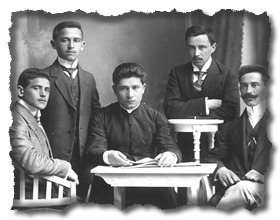
When, after the stormy years of WWI, the Republic of Poland appeared on the new map of Europe – emerging from oblivion, reborn in the heroic battle for independence – it seemed that the huge military effort of the whole nation would bring to all its constituents the statehood of which they had dreamed, restoring their homeland as a political entity, which had until now lived only in the spirit of many generations born during the partitions. However, for thousands of Poles living In the Eastern Borderlands, in the farthest pre-partition frontiers of the Crown and Great Duchy of Lithuania, a different reality emerged. Their dreams of returning to the bosom of their beloved Motherland, which they had fought to resurrect by participating in bursts of rebellion which had engulfed the eastern territories of the former Polish state to a significant degree, and which had exacted a huge toll in bloodshed and repression, were not to be fulfilled. Neither the battles against the Ukrainians nor the victory In the dramatic war with the Bolsheviks brought the results expected by many; namely, the return to the borders of the Republic of Poland before the partitions.
The territorial boundaries of the rebuilt Poland were, in great measure, defined by international politics. In spite of spectacular military and diplomatic successes, such as the armed occupation of Kiev and the later legal sanctioning of the permanent (for those times) incorporation of Vilnius into the borders of Poland, the boldest efforts to extend the Polish sphere of influence east did not succeed. This was regulated by the 1921 treaty with Russia in Riga which, on the one hand, restored the long-awaited peace but, on the other hand, definitively denied the Poles who found themselves outside the borders defined In the Treaty of Riga of any hope for a homeland that was truly theirs. This was a hope that had endured for over a hundred years, preserved for the most part by successive generations of patriots who developed a national consciousness which grew slowly and came to fruition in 19th Century Europe.
During the 1920’s, the number of Poles in Russia (later the U.S.S.R.) oscillated from 1.2 to 2 million. Most of them lived in direct proximity to the border of the Second Republic of Poland, in the territories of Belarus and the Soviet Ukraine. The totalitarian authorities of the Stalinist government denied many of them the right to maintain their identities as Polish nationals, while at the same time either significantly restricting repatriation or making it impossible.
In spite of this, a significant proportion of the Polish population, mainly the intelligentsia and landowners, managed to leave and settle within the borders of their reborn homeland. Those left behind formed ethnic centres which soon became experimental fields for the realization of the never-fading intentions in Russia of exporting the Communist Revolution to the West. Initially, it was precisely this Polish minority that was to play a vital role in these plans, becoming the seed of a new future republic which Stalin intended to create after his eventual conquest of the Republic of Poland, which blocked the way to exporting Communism to the rest of Europe.
However, as it turned out, the ethnic policy related to the so-called “Korenizacja” became more crucial to the fate of the Poles in the U.S.S.R. This policy involved a “returning to the roots”; that is, the return to certain groups of some rights which had been taken away during the rule of the Russian Empire. As a result of this policy, designated minorities – among them the Polish minority – gained the opportunity to use their native language in official matters, as well as the right to develop their ethnic culture and education. The ultimate result of this experimental concept, whose most important goal was to perfect a mechanism of forming a new type of Soviet citizen completely submitted to authority, mentally under the control of the ideals of Stalinist totalitarianism, was the creation of administrative government units, based on homogeneous ethnic areas. Despite the apparent granting of autonomy, control of these structures was to remain in the hands of the authorities – those “politically sure” and convinced of the values of Communism.
One of the most monolithic areas In the U.S.S.R., in terms of national homogeneity where it was possible to generate individual structures, was in Soviet Ukraine. According to the general census of 1926, in Wolyń, Szepietów, Berdyczów, and in the areas around Kamieniec Podolski, Żytomierz, Winnica and Kiev, as well as to a lesser extent in the rest of Soviet Ukraine, there lived 1.5 million Poles. It was there that the first Polish National Region came into being with its capital at Dołbusz, a small town a little more than one hundred kilometers from the border of the Second Republic of Poland. Not long after, Dołbusz was renamed Marchlewsk to honour Julian Marchlewski, a Pole committed to the Communist cause who was in fact one of the creators of the region. Before this administrative unit was formally established, the authorities assigned Polish cells, functioning on all levels of the Communist Party, which had the ultimate mandate of controlling all government activities, such as the distribution of Polish language newspapers throughout the Marchlewsk district, as well as to supervise Polish rural councils which exercised local authority in small settlements that were not part of the administrative region. Some of these were integrated into the region five years later; that is, in 1930, when the territory of the Polish Region was increased.
Over 40,000 people inhabited the newly established region (after another territory increase in 1930, more than 50,000) of which 31,000 were Poles – the remainder was made up of Ukrainians, Germans and Jews. Analogous to the manner that the Marchlewsk Region was established, the Soviets created a region for Poles in Belarus in 1932. It was established in the Minsk District, with its capital in Kojdanów, renamed Dzierżyńsk to honour the services of Feliks Dzierżyński, the prominent Communist activist of Polish origin, similarly to the case of Marchlewski (as well as Feliks Kon). Dzierżyński was a co-organizer of the concept of generating administrative structures along national lines. In addition to the small town of Dzieræyńsk, a further 20 to 30 nearby villages, with their local councils, were included in the Dzierżyńsk Region – all subordinated to larger administrative units of the government system of the U.S.S.R.
The population of both regions, which was comprised mainly of peasants, was subjected to intensified Soviet propaganda. This operation was conducted In schools, public reading rooms, by the publication of newspapers blatantly smearing Poland and criticizing social relations In Poland, and also by organizing mass meetings, that is, gatherings with political instructors (political officers) and agitators who made speeches full of passionate Communism about the achievements of the U.S.S.R. and the alleged backwardness and expanding poverty of the Second Republic of Poland.
An important element of this Soviet indoctrination of the uneducated classes was the attempt to single out the Polish Intelligentsia in each locality and give them the task of influencing their fellow countrymen. This resulted in absurd initiatives implemented by a small group of Communists grotesquely claiming the right to speak In the name of all the residents of a region and carrying out “Cultural Revolutions” such as the proposition of reforming Polish writing to simplify it by doing away with many grammar and spelling rules and instead imposing the principle “Write it as you say it”. With similar lack of success, the Soviets tried to develop a class of workers; however, because of the lack of economic development in the U.S.S.R. the establishment of this group of workers had little or no chance of continued success. There were no factories or places of business and no employment, and when they were built, there was no market for their products so that they could continue operating. The Polish population could not verify much of the information provided by the Communists but, persuaded by the absurdity of the accusations made by the propagandists against their homeland, as well as by personal conviction about the falseness of information concerning life In the U.S.S.R., for the most part, they remained distant.
Polish reserve towards the Soviets was deepened by anti-Catholic Communist activities. For the Poles, next to their language, religion constituted the most important element of their national identity, which the Communists struck at with uncommon determination.
Churches were closed, the clergy was persecuted, atheist beliefs were imposed and the celebration of holy days and Sundays was made impossible. Nevertheless, the Faith was cultivated in the home, where the residents of the towns and villages gathered in secret to celebrate the liturgies or pray the Rosary together.
The resistance of the Polish population to Sovietisation manifested itself very clearly during the compulsory collectivization which was initiated at the end of the 1920’s and the beginning of the 1930’s. The establishment of Collective Farms was opposed en masse, thereby preventing their organization, especially In the Marchlewsk Region where there were instances of armed confrontations as Poles actively defended their farms against Soviet activists and government officials.
The beginning of the 1930’s brought the first symptoms of the future tragedy of the Poles in the U.S.S.R. Just as in all of Soviet Ukraine, the calamity of starvation, artificially caused by the Soviets, engulfed the Marchlewsk Region. The huge food shortage caused a frightening death toll, and even led to cases of cannibalism. In such dire circumstances, people forced by their situation to steal even a small quantity of food to save their lives (such as picking a few ears of grain from the nationalized fields) were subjected to the most severe repressions, including death.
Several years later, having realized that they would not reach their goals with regard to the aforementioned Polish national regions, the Soviets concluded that their experiment had resulted in a fiasco. The Poles not only did not enter the ranks of the Communist Party refusing to submit to orders given by the authorities and resisting indoctrination, but, within the bounds of the freedoms granted them, they skilfully took advantage of the privileges, strengthening their national identity and preserving their traditions, which stood in contradiction with subordination to the expectations of Stalin.
In 1935, the Soviets began the liquidation of Marchlewsk Region, and soon thereafter, the Dzierżyńsk Region. They decided to relocate the Polish population to the heart of the U.S.S.R. Kazakhstan was selected as the ultimate destination for the deportation, although a few Poles were deported to Siberia. Collectivization in Kazakhstan brought nightmarish economic consequences. In the mind of the Kremlin, the resettled population would mitigate the disastrous effects of the reforms introduced there. The Communist authorities decided to make the Poles, who were comparatively well educated in agriculture, examples to be followed; in time, this would teach the Kazakhs how to farm. This was made impossible by the terrible quality of the soil on the plain of the steppe, and the total lack of farming experience of the indigenous people. For centuries the Kazakhs had been a nomadic people, only forced to settle in one place by the Soviets whose plan was to gain control over the Kazakhs, imposing their will through repression and indoctrination.
In 1936, mass expulsions of Poles from the Marchlewsk Region were carried out; two years later the Polish population of the Dzierżyńsk Region was also deported. At least 52,000 people were resettled from Soviet Ukraine alone. The convoys of exiles were made up of ordinary freight trains, unmodified for transport of human passengers. The nightmarish conditions of the long journey, accompanied by all their possessions (a small number of cattle was transported in the last car), without medical care, sanitary facilities and food, resulted in a high mortality rate, especially among the old, the sick and the children. The deported were taken to the northern reaches of the Kazakh Soviet Socialist Republic, where they were settled in the Akmolinsk, Kokchetowsk and Karagandyńsk Districts. They arrived at destinations that were named as follows: Toczka 1, Toczka 2…, or Point 1, Point 2…. These were literally empty, sparsely-populated areas of naked inhospitable steppe where signs posts with the place names had been driven into the ground every few kilometres by officials of the NKVD. These “Points” were nothing more than points on a map. The exhausted Polish populace had to build their settlements literally out of nothing, in order to survive. In this adverse climate, where temperatures had a range as high as 80°C (the difference between the lowest temperature in the winter and the highest in the summer), there sprang up first ziemianki and later samans, huts made of straw, clay and kiziak which baked in the sun.
Those who survived the first winter tried to cultivate the land. Exiled from their native lands, often without adequate tools and outside help, they were condemned to backbreaking labour, starvation and poverty. Yet this was not the only repression they experienced. They were also persecuted by their NKVD overseers, who were stationed at command posts to ensure that no one would even attempt to escape. Escape was extremely unlikely because of the huge distances to railway lines or other means of transportation, making it impossible to leave the boundless steppe. The NKVD overseers also restricted free contact between Poles and Kazakhs, which the Poles sometimes managed to circumvent, despite the fact that leaving the settlement was prohibited. The Kazakh, in turn, repeatedly tried help the hapless Poles.
In spite of the extreme conditions, their Polish identity continued to flicker in the hearts of the resettled Poles, although they were paying a very high price for this. They continued to cultivate the traditions of their fathers; they still prayed in their native tongue, holding fast to their fervent faith and their national identity. During the years of WWII, at the end of 1941 and the beginning of 1942, their countrymen – who had been deported into the heart of the U.S.S.R. from the Eastern Borderlands of the Second Republic of Poland – came through Kazakhstan on their way to the centres where the army of General Anders was forming. The exiles from the Marchlewsk and Dzierżyńsk Regions waited with great hope for a decision from Stalin that would allow them to escape the “Inhuman Land”. Unfortunately, it was not to be for them.
As persons who had never been citizens of Poland, they could not count on the “Amnesty” announced as a result of the Sikorski-Maiski Accord. Despite the fact that many of the exiles in Kazakhstan had greater loyalty to their Homeland than many pre-war citizens of the Second Republic of Poland, they had to endure in their places of deportation until 1956, when the law of “Specprzesiedlenie” or “Resettlement”, on the strength of which they were resettled, finally expired. It was at this time they finally gained the right to move within Soviet Kazakhstan, remaining there without means of returning to Poland, still persecuted for their anti-Communist resistance, for their faith and their Polish identity.
Today, the oldest of them still live on the steppes of central Asia, waiting for the opportunity to see the Homeland they dream of, in which they have never been able to set foot; a country which has not deigned to enquire after them, even after the fall of the U.S.S.R. Their irrational ties with the Homeland of their ancestors have survived for decades and have turned out to be stronger than all the suffering they have had to endure in order to testify, by their conduct and patriotism, how much Poland – that former one of the Eastern Borderlands, and that of the present day – matters.

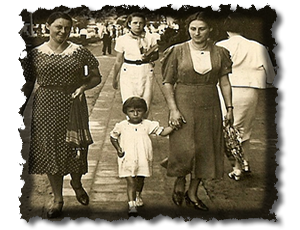
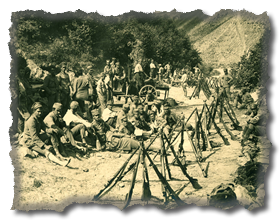

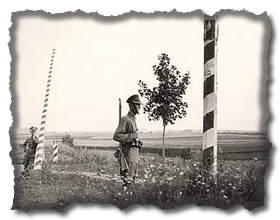

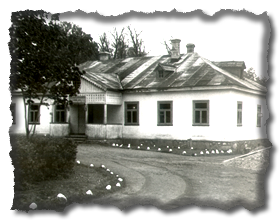
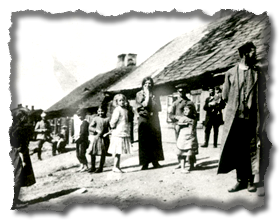
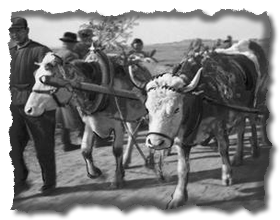
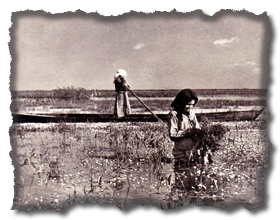
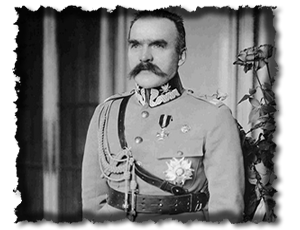 At the birth of the Second Polish Republic the Eastern Borderlands constituted a civilizational backwater compared to the western and central parts of the country. This situation become even worse after the war of 1920-21, when the civilian and industrial infrastructure spared by World War I was further destroyed, along with crops and livestock. This led to the depopulation of some of the eastern administrative units (powiats). Under such conditions the independent Polish Republic had to undertake suitable steps to consolidate the eastern regions with the rest of the Polish lands. An important issue in these Eastern Borderlands was the national minorities whose rights were guaranteed by a “little Versailles Treaty” from June of 1919. Additionally, in 1922 the Polish Parliament decided, in the autonomy statute for the provinces of Lwów, Stanisławow and Tarnopol, that their regional councils will be composed of two chambers, i.e. Polish and Ruthenian. Similarly, there was to be no Polish colonization in these provinces and a Ukrainian University was to be formed in Lwów.
At the birth of the Second Polish Republic the Eastern Borderlands constituted a civilizational backwater compared to the western and central parts of the country. This situation become even worse after the war of 1920-21, when the civilian and industrial infrastructure spared by World War I was further destroyed, along with crops and livestock. This led to the depopulation of some of the eastern administrative units (powiats). Under such conditions the independent Polish Republic had to undertake suitable steps to consolidate the eastern regions with the rest of the Polish lands. An important issue in these Eastern Borderlands was the national minorities whose rights were guaranteed by a “little Versailles Treaty” from June of 1919. Additionally, in 1922 the Polish Parliament decided, in the autonomy statute for the provinces of Lwów, Stanisławow and Tarnopol, that their regional councils will be composed of two chambers, i.e. Polish and Ruthenian. Similarly, there was to be no Polish colonization in these provinces and a Ukrainian University was to be formed in Lwów.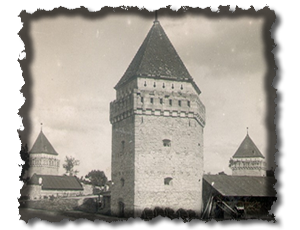

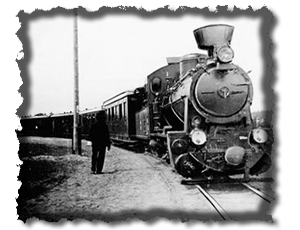 As the Second Republic of Poland was being born, it quickly became obvious that the builders of Polish statehood had to contend with not only the problem of defending the newly-attained independence of their homeland, but also the problem of uniting the geographic regions, diverse in many ways, into one economic entity. Each of the provinces was at varying levels of economic development, had different currencies, and had different social and ethnic structures. In particular, there was a large disproportion in the numbers of landowners between Western and Central Poland and the Eastern Borderlands, where large industry was almost non-existent. It is important to note that some of the exiting factories and plants had been dismantled and transported east by the Russians. Other factories were destroyed during the Polish-Bolshevik War in 1920. Consequently, the Eastern Borderlands were not only proportionately less industrialized, poorer and less advanced economically; they were also impacted by war. Not only was industry affected, but so was agriculture. For example, during the war in 1920, it was not possible to cultivate more than 3.5 million hectares of land in the Eastern Borderlands. In total, 1.7 million buildings in the Polish countryside were destroyed, 75% of which were agricultural buildings. It was estimated that 456 agricultural buildings were destroyed in a part of the province of Wilno. To that, one must add the slaughter or confiscation of livestock by military units, particularly cattle and pigs. The destruction of whole areas of the countryside deprived the population of infrastructures such as drainage systems, which were indispensable to cultivation.
As the Second Republic of Poland was being born, it quickly became obvious that the builders of Polish statehood had to contend with not only the problem of defending the newly-attained independence of their homeland, but also the problem of uniting the geographic regions, diverse in many ways, into one economic entity. Each of the provinces was at varying levels of economic development, had different currencies, and had different social and ethnic structures. In particular, there was a large disproportion in the numbers of landowners between Western and Central Poland and the Eastern Borderlands, where large industry was almost non-existent. It is important to note that some of the exiting factories and plants had been dismantled and transported east by the Russians. Other factories were destroyed during the Polish-Bolshevik War in 1920. Consequently, the Eastern Borderlands were not only proportionately less industrialized, poorer and less advanced economically; they were also impacted by war. Not only was industry affected, but so was agriculture. For example, during the war in 1920, it was not possible to cultivate more than 3.5 million hectares of land in the Eastern Borderlands. In total, 1.7 million buildings in the Polish countryside were destroyed, 75% of which were agricultural buildings. It was estimated that 456 agricultural buildings were destroyed in a part of the province of Wilno. To that, one must add the slaughter or confiscation of livestock by military units, particularly cattle and pigs. The destruction of whole areas of the countryside deprived the population of infrastructures such as drainage systems, which were indispensable to cultivation.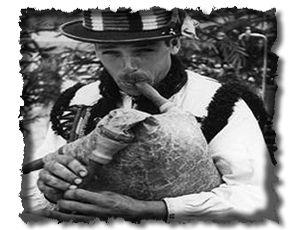
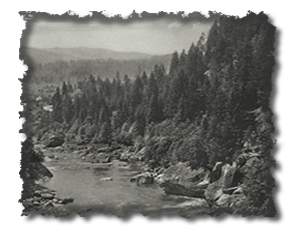 The Riga Peace Treaty, confirmed by the Ambassadors’ Council, defined the borders of the Second Republic – 25.5% of these, or 1412km, bordered Soviet Russia. The borders with Lithuania, Latvia and Romania were significantly shorter.
The Riga Peace Treaty, confirmed by the Ambassadors’ Council, defined the borders of the Second Republic – 25.5% of these, or 1412km, bordered Soviet Russia. The borders with Lithuania, Latvia and Romania were significantly shorter.
Social & Cultural Life
Much depended on the active participation of the two largest centers of the Kresy region: Lwow and Wilno. Their influence would radiate to the provincial communities. Libraries, museums, theatres, galleries, social organizations were established. But, above all, the schools of higher education allowed for an expanded knowledge of world culture in the smaller centers of the region.
The most modern form of disseminating education and culture to the widest audience at that time was radio. The first broadcast of Polish radio in the Kresy region occurred in Wilno on January 15, 1928. It broadcast at a distance of 140 km, and by 1938 it sent into the ether almost 5000 hours of broadcast time. Two years after the Wilno station was established, a second, very popular station in Lwow was activated on January 15, 1930 with similar broadcast capabilities. Few remember the fact that a newer third station was activated in July, 1938 a year before the war in Baranowicze and it broadcast a distance of 120 km. At that time in the province of Nowogrod there were 11 radios for a population of 1000. The province of Wilno had 26 radios and the province of Lvov had 28 radios as compared to the national average of 29 radios. Unfortunately, the radio station in Luck was still under construction when WWII started. The most popular country-wide satirical show was “Funny Radio Waves From Lwow”. Other popular radio programs were “Our Eye”, “Happy Sunday,” “Ta-joj,” and “City Hall Conversations with the Lions.” Kresy radio stations broadcast satirical, sport and musical programs similar to current broadcasts, as well as foreign programs. Author interviews from Lwow and Wilno were broadcast nationwide.
The Press was particularly important to this mass mandate. In 1937 there were 163 periodicals in the Kresy provinces, of which 17 were dailies and 29 were weeklies. This was minimal in comparison to the western provinces where 609 titles were published, of which there were 62 dailies and 128 weeklies. The most important was Wilno’s “Slowo” appearing from 1811. Also important was “Gazeta Lwowska” published in Lwow from 1894 – 1934 and “Slowo Polskie,” “Gazeta Codzienna” (1908-1939), “Dziennik Ludowy,” “Kurier Lwowski,” “Wiek Nowy” and the nationally syndicated “Chwila” (1919-1939). Both Lwow and Wilno editions of “Rzeczpospolitej” were available. In Grodno there was also the publication “Echo Grodzienskie”.
Popular pre-war amusements were movie theatres. In 1929 there were 727 movie theatres in the Second Polish Republic. In the provinces Lwow had 63, Wilno 17, Wolyn 23 and there were only 9 in Poleski. Not all of them had sound capabilities. Three years before the war 69 of the 75 movie theatres in Lwow province had sound capabilities. By 1939 there were no remaining silent movie theatres in the Kresy area.
In the short period of the evolution of the Second Polish Republic many museums were either opened or expanded in the Kresy area. In April 1939, 48 museums existed in the Kresy provinces, of which 17 were in Lwow (in comparison Warsaw had 30.) There were 26 museums in the vicinity of Lwow province. That number includes 4 museums in Wilno and 1 in the entire Poleskie area. Nowogrod province had 3 museums, Wolyn 5, Stanislawow 3 and Tarnopol 6. The biggest and most popular belonged to Lwow. There was the “Galeria Narodowa” of the city of Lwow, “The Museum Dzieduszyckich” found in the eastern marketplace, “The Panorama Raclawicka,” “The Historical Museum of the City of Lwow”, “The Lubomirski Museum,” “The King John III national museum” and also in Wilno “The Museum of the Organization of Friends of Education.”
Whoever wanted to read Polish could take advantage of books in the self-serve libraries and popular reading rooms run by social organizations. Of the pre-1939 libraries established in Lwow province, where there were 15 permanent ones and 28 mobile ones. In Wilno there were significantly more, 79 permanent libraries and 485 mobile ones; similarly in Nowogrod there were 69 permanent ones and 651 mobile ones. There were fewer self-governing libraries in the southern Kresy region compared to Wilno and Nowogrod. The proportion was reversed when taking into account social libraries. Lwow had 1604 permanent ones and 919 mobile ones. Similar numbers existed in Tarnopol and Stanislawow.
In addition, many theatres were founded in the Kresy region. From the moment freedom was gained, theatres grew in fame and in the consciousness of the public. Two years before WWII 503,000 tickets were sold in theatres in Lwow alone. The number in Wilno was 311,000. Decidedly fewer tickets were sold in that time period for concerts and literary readings. In Lwow that number was around 15,000.
In the countryside, there were many popular forms of entertainment: folk choirs, folk revues and light box plays. For example, in the Wilno region in 1939 there were 523 theatrical groups and 190 choirs. In the vicinity of Lwow there were 2394 light box groups, 1141 theatres and 666 folk choirs. The most famous Kresy theatre was at Pohulanka in Wilno. Located on Wielka Pohulanka street it was graced by the performances of Hanka Ordonowna, Aleksander Zelwerowicz, Igor Przegrodski, Hanka Bielicka, Danuta Szaflarska and Zbigniew Blichewicz. In the 1920’s the director was Juliusz Osterwa. He arrived with his review “Reduta” in 1925. Similar great theatre occurred in the beautiful “Teatr Wielki” in Lwow. The stage was graced, among others, by the performance of Helena Modrzejewska and Aleksander Zabczynski. The director of the theatre from 1930 was Leon Schiller.
An important role, particularly in the Kresy region, was played by numerous public societal organizations and educational-cultural ones located in both cities and the countryside. They fulfilled functions of social life similar to that of the libraries and reading rooms. Among others they were the “Polish Maternity School,” “Society of Popular Schools”, “Society of the Workers University”, “Catholic Union of Young Females”, “Central Union of Country Youth”, “ Society of Country Youth RP Wici”, “Central Organizational Circle of Country Landlords,” Rifleman’s Union,” “Union of Young Christians,” “Polish YMCA,” “Polish Red Cross,” “Air and Anti-gas Defensive League,” “Polish Boy Scouts and Polish Girl Scouts,” “Building Society of General Schools,” “Friends of Academic Youth Society,” “Fire Fighter’s Society”. In 1936 alone there were 314 active educational societies in Poland of which 17 were in Wilno and 38 in Lwow. Some of these organizations are still active today e.g. the YMCA and Polish Scouting.
Sport was another area in which Kresy residents met each other. Kresy sport clubs had an impressive effect on the expansion of sport in the Second Polish Republic. The oldest sports club was “Pogon Lwow, founded in 1904 in conjunction with High School IV in Lwow. It functioned under the official name of “Lwow Sports Club-Pogon Lwow”. Taking into account the history of Polish soccer after “Lechii Lwow” and “Czarnych Lwow” this was the third soccer organization during the time period of the Second Polish Republic to be a four-time Polish Champion. In the 1930’s, the Army sports club named “Smigly Wilno” comprised of the Wilno Garrison Officers, was part of the Premiere Polish Soccer League. Other notable clubs were “AZS Wilno” and “AZS Lwow” known for, among other things, their very good ice hockey clubs. The most popular sport was soccer which, towards the end of the Second Polish Republic, had over124, 000 soccer players in clubs. There were also 23,000 skiers, 13,000 hand-ball players, 22,000 sport shooters and 9,000 in light athletics. Many people were part of the popular physical education Gymnasium Union “SOKOL”, which had approximately 50,000 members in almost 832 clubs within the Second Polish Republic.
The Kresy region also yielded many well-known creative writers, which we currently do not identify with either Lwow, Wilno or other Kresy locations. Among others, it is important to name Kornel Makuszynski ( 1884 – 1953 ), writer and poet born in Stryj , author of “Panna z mokra glowa”, “O Dwoch takich, co ukradli ksiezyc”, “Szatana z siodmej klasy” and “Awantury o Basie”. He did not return to a free Lwow in 1918 but settled in Warsaw, however, his writing skills were strengthened thanks to a degree in Philology at the University of Lwow and his initial editorial work in the Kresy region. Leopold Staff, born in Lwow (1878-1957) was a famous poet whose road in life was similar to Kornel Makuszynski. He belonged to the “Moda Polska” generation. His creativity earned him an iconic position in twentieth century Polish literature. He developed as a writer in Lwow thanks to the education he gained at “V Gimnazjum Klasycznym” and most of all at the University of Lwow, where he was a triple major. Leopold Staff was part of a literary group named “Planetnikow”. They met at a villa named “Zaswiecie” located near the Ossolineum in Lwow. Another famous member of the group was Jan Kasprowicz (1860-1926), dramatist and poet. Although he was born beyond the Kresy region, he is closely identified with the Lwow bohemian artist community. Born, raised and educated in Lwow was the writer Jan Parandowski (1895-1978) known for his ancient culture writings. Wilno produced a distinguished Conservative Publicist named Stanislaw Cat-Mackiewicz (1896-1966). He was the founder of the popular Wilno periodical “Slowo”. The author of “Dewajtis” and Wrzosu”, Maria Rodziewiczowna, was born in Pieniuchach na Grodzienszczyznie. A few kilometers from Kiejdan, in a shtetl, the Nobel Prize winner Czeslaw Milosz (1911-2004) was born. He was a student at the Stefan Batory University in Wilno, a poet of the Zagary group and, prior to 1939, an employee of Wilno Polish radio station. It must be noted that all of the above passed away beyond the Kresy region: Makuszynski and Kasprowicz in Zakopane, Milosz in Krakow, Parandowski in Warsaw, Rodziewiczowna in Leonowie pod Skierniewicami and Staff in Skarzysku-Kamiennej.
It is also important to mention popular actors Szczepcia and Toncia. Something must be said about the characters hidden under these pseudonyms. The first was born in Lwow as Kazimierz Wajda (1905-1955). He was a graduate of schools in Lwow and a student of the Polytechnic. Toncio Tonko was Henryk Vogelfanger (1904-1990), who was also born in Lwow and studied law at the John Kazimierz University. Both became popular because of the radio program “ Funny Radio Waves From Lwow”. They wrote scripts for Wiktor Budzynski and also for themselves. This was the first cabaret broadcast by Polish radio outside Warsaw. Their work was so excellent that it was the most popular radio program in the Second Polish Republic and was heard by six million listeners. They were also not allowed to stay in their beloved Lwow after 1945. They both passed away in Warsaw. It is interesting to note that many important Polish cultural figures were educated at the “III Gimnazjum Meskiego im. Stefan Batory” located directly across from the Lwow Polish Radio Station.
Among the many famous creative individuals born in Lwow was the poet and dramatist Zbigniew Herbert (1924-1998), poet Adam Zagajewski (1945- ), writer and satirist Janusz Wasylkowski (1933- ), actor and director Adam Hanuszkiewicz ( 1924- ), director Jerzy Passendorfer (1923-2003), actor Ryszard Ronczewski (1930- ), poet Teodor Bujnicki (1907-1944), violinist Jascha Heifetz (1901-1987). Born in other Kresy areas: director Jerzy Kawalerowicz (1922-2007) born in Gwozdzcu in the vicinity of Kolomyi, director Jerzy Janicki (1928-2007) born in podoskim Czortkowie, and the popular actor Zygmunt Kestowicz (1921-2007) from the Wilno region.
At the end of WWII Poland lost the Kresy region, with its abundance of culture manifested in its museums, theatres, and libraries. Yet, in spite of this cataclysm, thousands of creative individuals raised and educated in the Kresy region were saved and subsequently introduced in post-war Poland; this is an immeasurable gift to the benefit of the country. For many years, in spite of domestic difficulties and overwhelming poverty, Polish nationalism has been maintained by the Poles living in the pre-war Kresy areas, where theatres, clubs, libraries, groups, etc. have remained locations for maintaining Polish heritage. These accomplishments are still visible today.